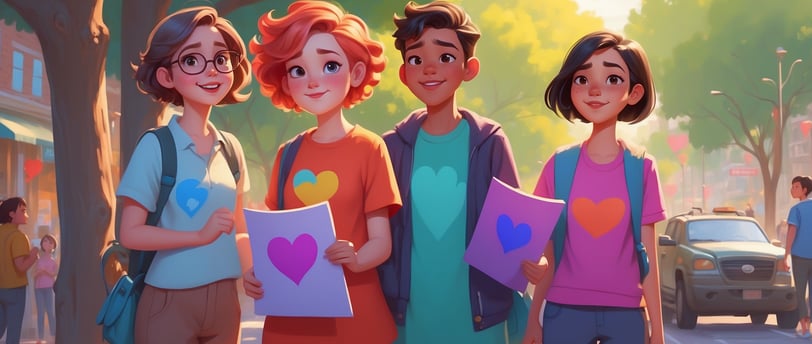Controversial? Bring it on!
Yes, even children’s picture books are political. Here’s how that reality of life in the U.S. comes into play in my author journey.
Mae Shell
8/24/20242 min read


These days in the U.S, everything is political–even children’s picture books. This fact of life comes into play in my author journey in two ways.
First and foremost, there’s gender.
I’m not the only parent who has changed the gender of picture book characters to match that of the child being read to. Admittedly, this is a phenomenon mostly among parents of daughters, because female protagonists in children’s literature are chronically underrepresented.
From a traditional perspective, 50% of picture book characters should be female, to represent the population. Except, as it turns out, gender is not necessarily binary. What about nonbinary or gender-fluid folx? And should animal or inanimate characters be gendered at all?
These realities and questions are what motivated me to consider nonbinary viewpoints as a cornerstone of my books. The more I thought about it and considered the implications, the more it felt right to go down this path.
I know that in choosing this niche for my stories, I am sticking my neck out since a significant majority of picture books challenged in U.S. schools feature LGBTQ characters, which obviously includes nonbinary. But, since nonbinary and transgender characters are even more underrepresented in children’s literature than girls, I love the idea of doing my own little part to tip the scales a bit.
Second, and of somewhat less political significance, is neurodivergence. This is a wide term that can include various labels used in the U.S. and elsewhere to describe differences in brain mechanics that can moderately or profoundly affect the way people experience life. These labels can be controversial, and can be used in discriminatory ways to exclude or abuse people who don’t fit into the “normal” box.
In both cases, I see an opportunity to help underrepresented people feel seen and heard… without detracting from great storytelling.
I acknowledge that there are many other types of inclusivity I’m not focusing on specifically–including race, ethnicity, physical disabilities, and developmental disabilities. This is not because I don’t think they’re important, but mostly because I’m much less knowledgeable about how to represent them in a way that helps rather than hurts. These disparities are always in the back of my head, and may become elements in my stories.
In my next blog, I’ll talk about what I think makes a good story people of all ages can identify with, and how writing about nonbinary and neurodivergent characters helps reveal universal truths about the human experience.
